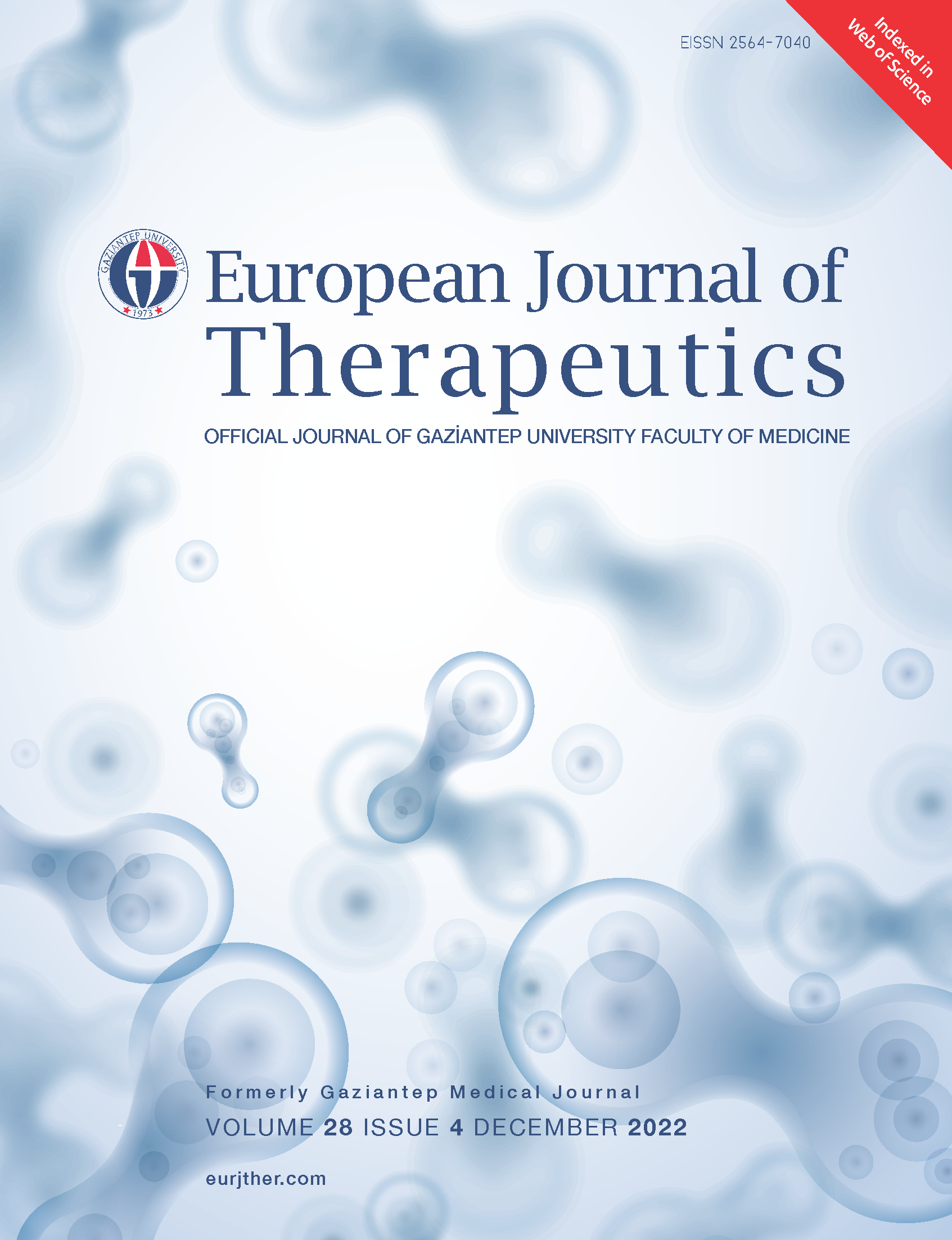Morphometry of the Glenoid Cavity of Dry Scapulae of Human Adults
DOI:
https://doi.org/10.58600/eurjther-28-4-0093Keywords:
Glenoid cavity, arthroplasty, replacement, shoulder, shoulder joint, surgery, anatomy, anthropometryAbstract
Objective: The shoulder joint is considered the most unstable in the human body and this is due to the measurement relationships between the bone surfaces of its components. This joint is subject to frequent dislocations, which can result in acute fracture or gradual bone loss, which can lead to recurrent instability, additional injury and pain. In this study, it was aimed to carry out a study of the maximum height and width measurements of the glenoid cavity of dry scapulae, correlating them with sex and dimidium.
Methods: Measurements of the maximum heights and widths of 90 dry scapulae glenoid cavities were performed using a 0.01 mm precision digital caliper, 54 were males and 36 were females, with a mean age of 51.9 years. Values of p<0.05 were considered statistically significant.
Results: In general, the height and width measurements of the glenoid cavity, as well as the correlation between these measurements in relation to gender, were slightly higher in the right side (p>0.05). When we correlated the mean height and width of the GC with respect to homologous sides and sexes, they were also higher in males, but this finding was statistically significant (p<0.05).
Conclusion: The findings of these measurements of the glenoid cavity represent a contribution not only for anatomy, but especially for orthopedists, when planning shoulder arthroplasty procedures, as well as helping the industry to develop more accurate and functional joint prostheses for the Brazilian population
Metrics
References
Singh R. Surgical Anatomy of the Glenoid Cavity and Its Use in Shoulder Arthroplasty Among the North Indian Population. Cureus. 2020 Dec 6;12(12):e11940.
Monk AP, Berry E, Limb D, Soames RW. Laser morphometric analysis of the glenoid fossa of the scapula. Clin Anat. 2001 Sep;14(5):320-3.
Smith TO. Immobilisation following traumatic anterior glenohumeral joint dislocation: a literature review. Injury. 2006 Mar;37(3):228-37.
Roy EA, Cheyne I, Andrews GT, Forster BB. Beyond the Cuff: MR Imaging of Labroligamentous Injuries in the Athletic Shoulder. Radiology. 2016 Apr;279(1):328.
Bollier MJ, Arciero R. Management of glenoid and humeral bone loss. Sports Med Arthrosc Rev. 2010 Sep;18(3):140-8.
Gilat R, Haunschild ED, Tauro T, Evuarherhe A, Fu MC, Romeo A, Verma N, Cole BJ. Distal Tibial Allograft Augmentation for Posterior Shoulder Instability Associated With Glenoid Bony Deficiency: A Case Series. Arthrosc Sports Med Rehabil. 2020 Dec 15;2(6):e743-e752.
Burkhart SS, De Beer JF, Barth JR, Cresswell T, Roberts C, Richards DP. Results of modified Latarjet reconstruction in patients with anteroinferior instability and significant bone loss. Arthroscopy. 2007 Oct;23(10):1033-41.
Churchill RS, Brems JJ, Kotschi H. Glenoid size, inclination, and version: na anatomic study. J Shoulder Elbow Surg. 2001 Jul-Aug;10(4):327-32.
Gandhi KR, Verma VK, Ubbaida AS, Satpute SS. The Glenoid Cavity: its morphology and clinical significance. Int J Curr Res Med Sci. 2015;1(6):1-5.
Akhtar J, Kumar B, Fatima N, Kumar V. Morphometric analysis of glenoid cavity of dry scapulae and its role in shoulder prosthesis. Int J Res Med Sci. 2016 Jul;4(7):2770-2776.
El-Din WA, Ali MH. A Morphometric Study of the Patterns and Variations of the Acromion and Glenoid Cavity of the Scapulae in Egyptian Population. J Clin Diagn Res. 2015 Aug;9(8):AC08-11.
Cirpan S, Güvençer M. The Notch Types of the Glenoid Cavity in Adult Dry Human Scapulae. J Basic Clin Health Sci 2019;3:46-50.
Polguj M, Jędrzejewski KS, Topol M. Sexual dimorphism of the suprascapular notch - morphometric study. Arch Med Sci. 2013 Feb 21;9(1):177-83.
Mathews S, Burkhard M, Serrano N, Link K, Häusler M, Frater N, Franke I, Bischofberger H, Buck FM, Gascho D, Thali M, Serowy S, Müller-Gerbl M, Harper G, Qureshi F, Böni T, Bloch HR, Ullrich O, Rühli FJ, Eppler E. Glenoid morphology in light of anatomical and reverse total shoulder arthroplasty: a dissection-and 3D-CT-based study in male and female body donors. BMC Musculoskelet Disord. 2017 Jan 10;18(1):9.
Knapik DM, Cumsky J, Tanenbaum JE, Voos JE, Gillespie RJ. Differences in Coracoid and Glenoid Dimensions Based on Sex, Race, and Age: Implications for Use of the Latarjet Technique in Glenoid Reconstruction. HSS J. 2018 Oct;14(3):238-244.
Homem JM, DeMaman AS, Lachat D, Zamarioli A, Thomazini JA, Lachat JJ. Anatomical and Anthropological Investigation of the Articular Surface of the Human Glenoid Cavity in Brazilian Corpses. SM J Clin Anat. 2018;2(2):1010.
Chaijaroonkhanarak W, Amarttayakong P, Ratanasuwan S, Kirirat P, Pannangrong W, Welbat JU, Prachaney P, Chaichun A, Sae-Jung S. Predetermining glenoid dimensions using the scapular dimensions. Eur J Orthop Surg Traumatol. 2019 Apr;29(3):559-565.
Jia Y, He N, Liu J, Zhang G, Zhou J, Wu D, Wei B, Yun X. Morphometric analysis of the coracoid process and glenoid width: a 3D-CT study. J Orthop Surg Res. 2020 Feb 24;15(1):69.
Khan R, Satyapal KS, Lazarus L, Naidoo N. An anthropometric evaluation of the scapula, with emphasis on the coracoid process and glenoid fossa in a South African population. Heliyon. 2019 Dec 27;6(1):e03107.
Mamatha T, Pai SR, Murlimanju BV, Kalthur SG, Pai MM, Kumar B. Morphometry of Glenoid Cavity. Online J Health Allied Scs. 2011;10(3):7.
Rajput HB, Vyas KK, Shroff BD. A study of morphological patterns of glenoid cavity of scapula. National Journal of Medical Research. Oct – Dec 2012;2(4):504-57.
Tiwari V, Tiwari S, Das SS, Vasudeva N. Geometric morphometry of glenoid cavity in dry adult scapula and its surgical implications. Int J Sci Res. 2018 Jan; 7(1):211-14.
Raaj MS, Felicia C, Sundarapandian S, Ashma KA. Morphologic and morphometric analysis of glenoid cavity of human scapula. Int J Res Med Sci. 2019 Jan;7(1):52-57.
Downloads
Published
How to Cite
Issue
Section
License

This work is licensed under a Creative Commons Attribution-NonCommercial 4.0 International License.
The content of this journal is licensed under a Creative Commons Attribution-NonCommercial 4.0 International License.


















